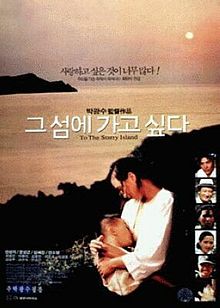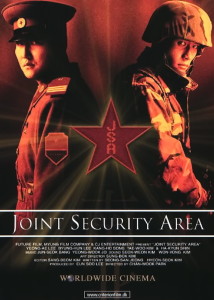Introduction to the Korean New Wave of Cinema
Since it’s the new year, those of us at KultScene will be branching out into other areas of contemporary Korean culture other than, but not forgetting about, K-pop. To start, this I am beginning a new series on modern Korean cinema. Despite being the second wave of Korean film, we will style it the New Wave of modern Korean cinema. Korea has always influenced many different kinds of motion picture; from the videos you see on https://www.tubev.sex/?hl=ko, all the way to this new trend of Korean influence seen in Hollywood. Over the coming weeks, I am going to look at different areas of Korean cinema, which will include spotlights on a few prominent directors, exploring the themes of Korean cinema, and Korean cinema’s experiences in Hollywood. We will start off nice and slow, with a short introduction as to what I would term the Korean New Wave. So, I will outline how the wave started and its main players.
This new wave is generally considered to have started in 1997 and ended in 2005 when the films became more mainstream but the quality and influence has remained to this day.
What happened in 1997 to spark such a wave of creativity? Well, lots of things. Of course, it wasn’t just 1997, but South Korean film had been experiencing a lot of changes in the 80s as well, it just wasn’t as momentous. For instance, a revision was made in the Motion Pictures Act in 1987, which allowed foreign film companies to work in Korea. The benefits of these new possible deals were not felt straight away due to Korea’s conservative nature. Ever since the dictatorship of Park Chung Hee introduced strict censorship policies, and the Korean film industry had to abide by them. So, an anti-American movement essentially prevented Korean cinema from expanding its horizons to include foreign films.
Also on KultScene: South Korea’s Portrayal Of North Korea Isn’t A Comedy So Stop Laughing At ‘The Interview’
As Korea transition from dictatorships to true democracy, Korean filmmakers began to fight back. 1990 to 1996 is generally considered the first new wave of Korean cinema. The directors of this age made it possible for the directors we are going to look at, to make what they wanted without restriction. Park Kwang-su, Jang Sun-woo, Chung Ji-young, Lee Myung-se, and many others looked at historical events and ideas that were taboo under the dictatorship and reinterpreted these issues in a modern context. This allowed Korean audiences the chance to rethink what they knew about their country.
As the film industry grew in the 1990’s, so did democracy. In Korea this meant that more liberal values were introduced into Korean society. The good times did not last too long, as the first wave came to an end at the same time as the Asian financial crisis in 1997. These changes were a big influence on the next wave, which properly began in 1999.
The Korean government and chaebols (conglomerates) were greatly affected by the Asian financial crisis and the Korean people suffered for it too. In these seemingly constant difficult times for Korea, a stirring of the creative people in the country was inevitable. Times of confusion and strive tend to create melting pots of disillusioned young people who are waiting to strike back in interesting and biting ways. Through film, the people of Korea created something truly original and specific.
Also on KultScene: SM Entertainment Goes Disney
With the increased liberalization of Korea, trips overseas for students were also now more common. Students could now move more freely to study abroad, and the average person had had more opportunities to travel. Young students were particularly drawn to America with its diverse culture. Filmmakers went to study in America and learned new ways of not only approaching cinema but life as well. For an example Lee Soo Man travelled to America and when he came back he created SM Entertainment. These budding filmmakers saw violence and sex in America and returned to strict family values in Korea. This meeting of cultures between the East and the West would go on to become a big part of the new wave’s cinema. Wild tonal shifts are now known as a distinct feature of Korean cinema because of it. It can also explain the moral pushing work of directors like Kim Ki Duk.
Our wave begins, strangely enough, with a blockbuster from 1999 called Shiri written and directed by Kang Je Gyu. Shiri was the first of its kind in Korea and, despite the turbulent financial times, it got a huge budget. It was no mere blockbuster though, but was the first major release to address the North/South divide of Korea in a way outside of traditional propaganda. It attempted to show North Koreans in a more realistic way rather than just negative which was very progressive at the time. Not only did it challenge contemporary Korean issues, the blockbuster effects led to Shiri becoming the most lucrative film in Korean history, beating even Titanic. This economic and critical success paved the way for more daring and diverse Korean cinema, and more blockbuster-style films.
Although his film was a major part of the wave, another Kang Je Gyu went on to make only two more films between then and now and both were commercially but not culturally successful. Those who benefited from his success however, benefitted greatly. Hot off the heels of Kang’s film about North Korea, Park Chan Wook released his third feature Joint Security Area (J.S.A) about the same subject in 2000. His take was much less conventional and focused more on the inherent strangeness of soldiers standing on a physical line that borders two countries every minute of every day. It was a strong debut, and marked Park as a director to watch. And he certainly was, as he became one of the leading voices of the Korean new wave of cinema. His film Oldboy was the first Korean film to really crossover to the West and gain acclaim, even winning an award at the Cannes Film Festival. The film two films also introduced actors Lee Byung Hun and Song Kang Ho as leading men.
Alongside Park, two directors in particular led the wave, Kim Ji Woon and Bong Joon Ho. They both released films before Park, Kim in 1998 and Bong in earlier 2000, but didn’t find their hit until after the critical landscape changed due to J.S.A. Between the three of them, they released a staggering amount of incredible films and their influence goes further than just Korea. They have all also recently released their first English language films based in America. Our look at the new wave will feature primarily, but won’t be confined to, these three directors and will continue in the coming weeks with a more in depth look at each of their careers.
Do you like the Korean New Wave? Is there anything you would like to see covered in this series? Share your thoughts in the comment section below and be sure to subscribe to the site and follow us on Facebook, Twitter, Instagram, and Tumblr to keep up with all of our posts.



